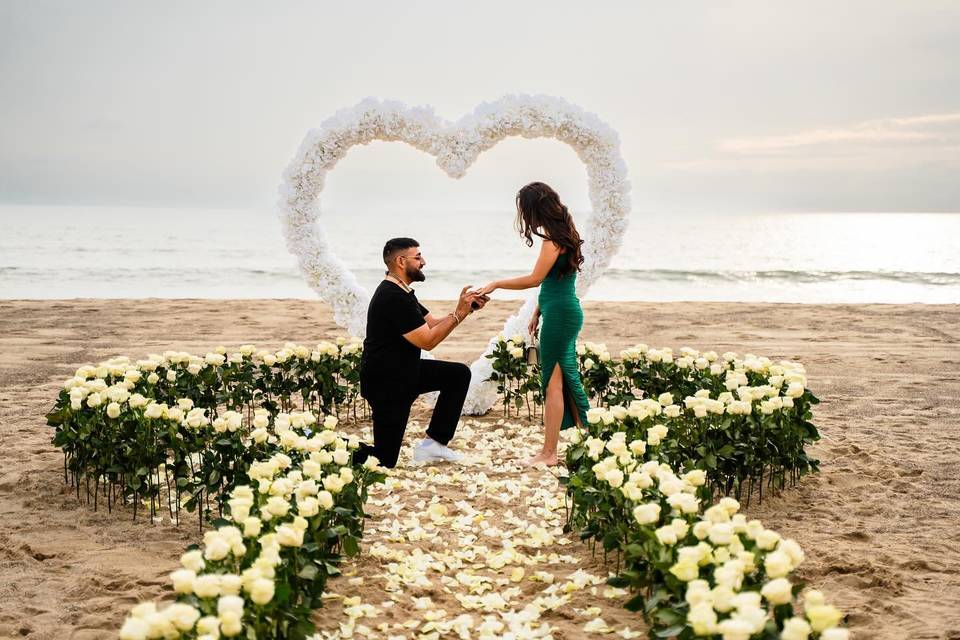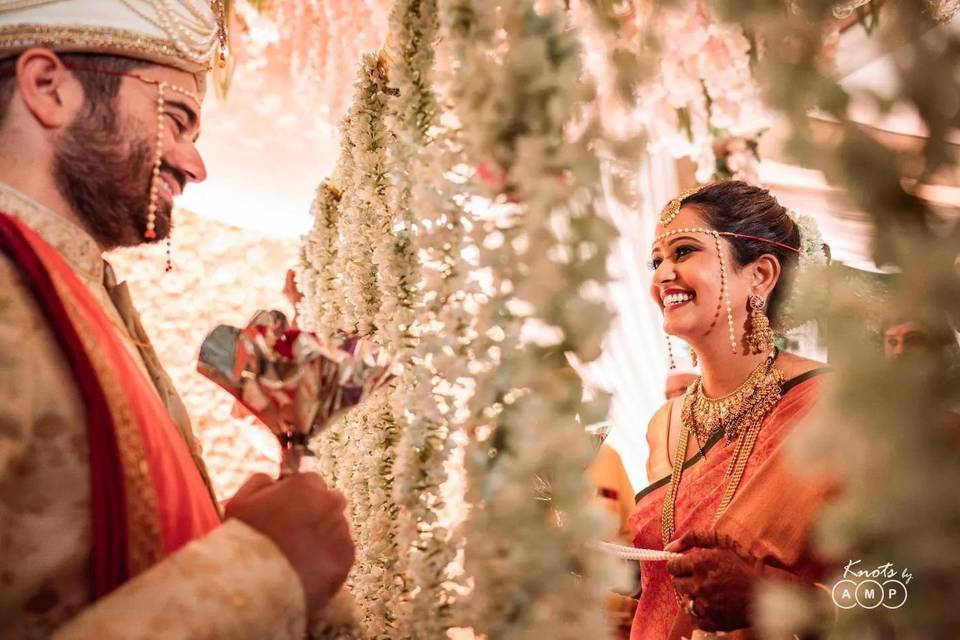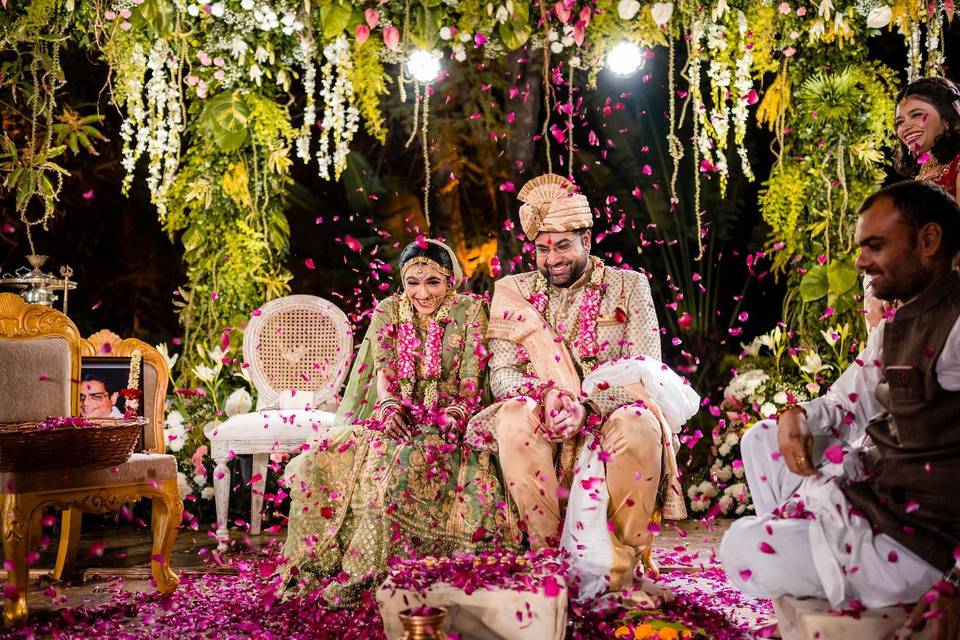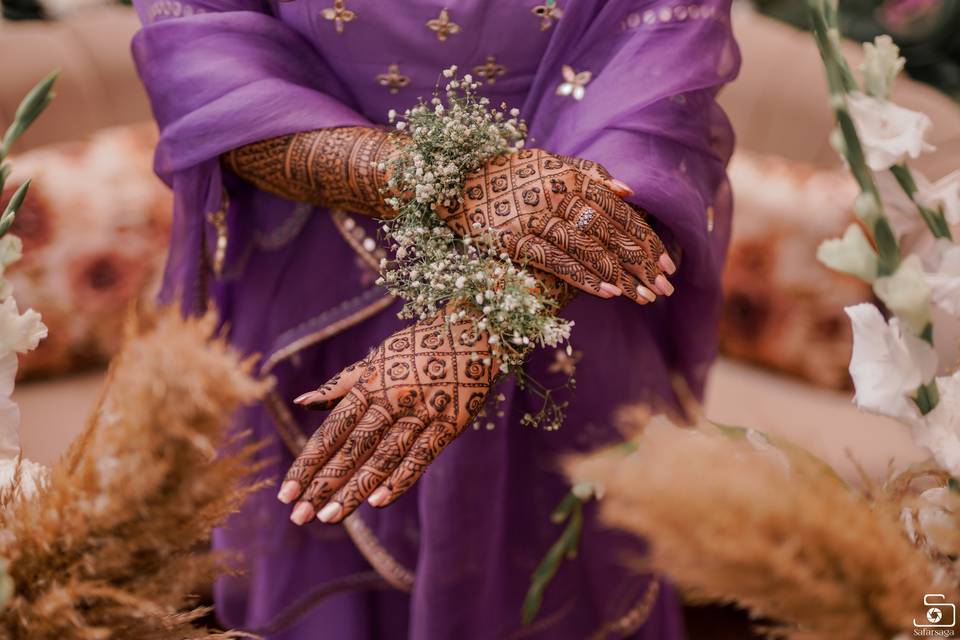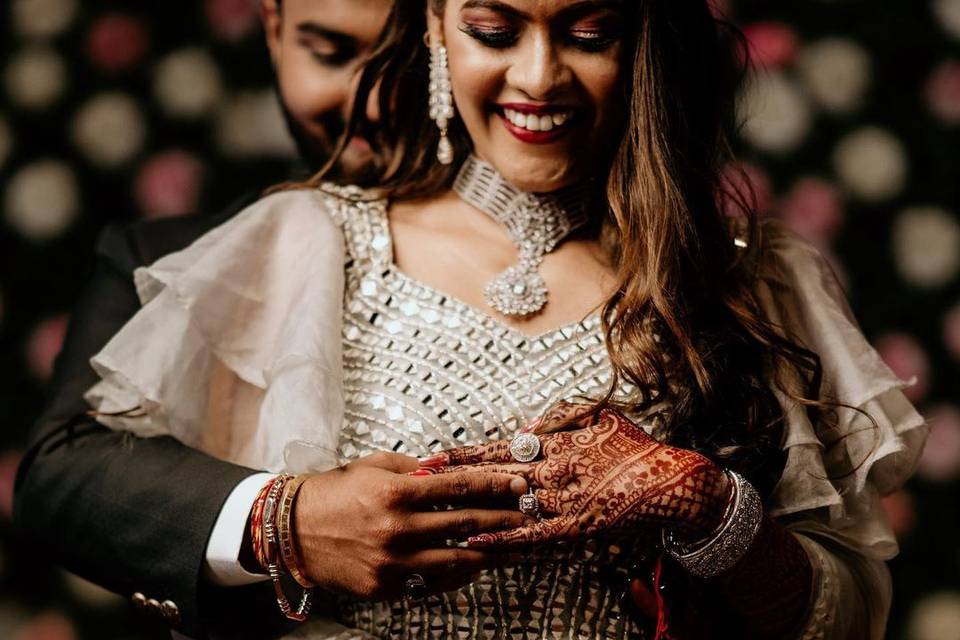Kannada Wedding: Decoding the Beauty & Traditions of the Rich Culture
Kannada weddings are one of the major weddings celebrated in Karnataka & it's breathtaking. Read more to know the simple yet sacred traditions of a Kannadiga wedding.

The rich Indian culture is known for its deep-rooted heritage. One such treasure found in the world of Indian weddings is the Kannada wedding. Kannada weddings are largely seen in Bangalore, Karnataka. These weddings are typically simple in nature without much pomp and show. They are also significantly shorter in duration and is a 2-3 day event.
Day weddings are blissful to watch and Kannada weddings are also hosted during the day time. With mesmerising decor and outfits, Kannadiga weddings are visionary and are a sight for the sore eyes. Sharing similar rituals with the neighbouring states, Kannada weddings also have some individual traditions that are solely followed by certain regions of Karnataka. However, the foundation of Kannadiga weddings is the age-old traditional values and ethnicity.
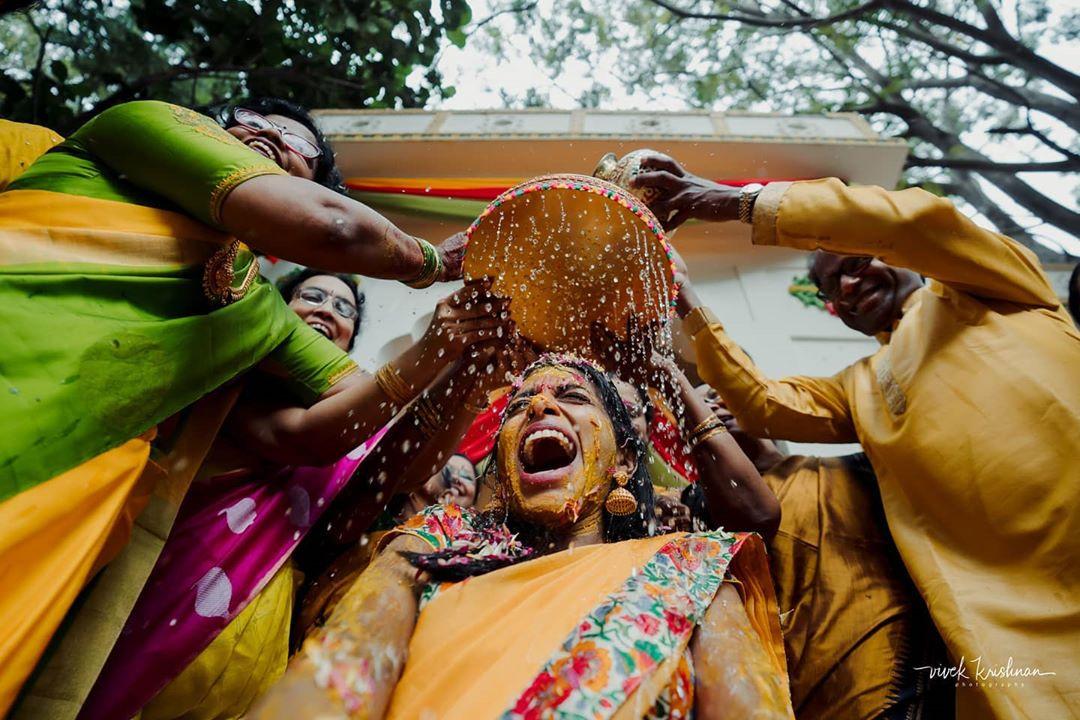
The Kannada weddings do not traditionally celebrate Haldi and Mehndi as a pre-wedding celebration. However, the millennials have chosen to incorporate these in their Kannadiga wedding too. Once the horoscopes are matched (which might have become a mere formality with time) the celebrations begin in full swing.
Here is the complete guide, taking you on a beautiful ride to know more about Kannadiga wedding and their cultural significance.
Pre-wedding Ceremonies
Before the wedding takes place in full fervour for the 2-3 day duration, there are certain significant pre-wedding traditions that are celebrated in a Kannadiga wedding. Here is a list of all the pre-wedding ceremonies that usher the path to the wedding.
Nischay Tamulam

This ceremony is equivalent to the official engagement ceremony that many cultures celebrate. The parents of the bride and groom exchange betel leaves and betel nuts to shower their blessings on the match. The parents of the groom offer her a saree, matching blouse, coconut and sweets and the bride's parents give the groom dhoti, coconut, fruits and sweets. Another significance of this ceremony is that the priest decides the date of the wedding. This ceremony officiates the wedding celebrations.
Naandi

Any religious ceremony or pujas in Kannadiga weddings is known as Shastras. Naandi is one such shastra that commences the wedding rituals in full swing. This shastra is held in the bride and groom's houses respectively where a copper pot filled with holy water - symbolising Amrit, with coconut is placed in the house. This ritual performed by the family priest is a prayer that ensures that the wedding ceremony proceeds without any troubles. This shastra also ensures that the couple has a blessed life of abundance, prosperity, health and wisdom. The first invitation card is also placed in front of the almighty before it goes out to everyone.
Chhapra Puja
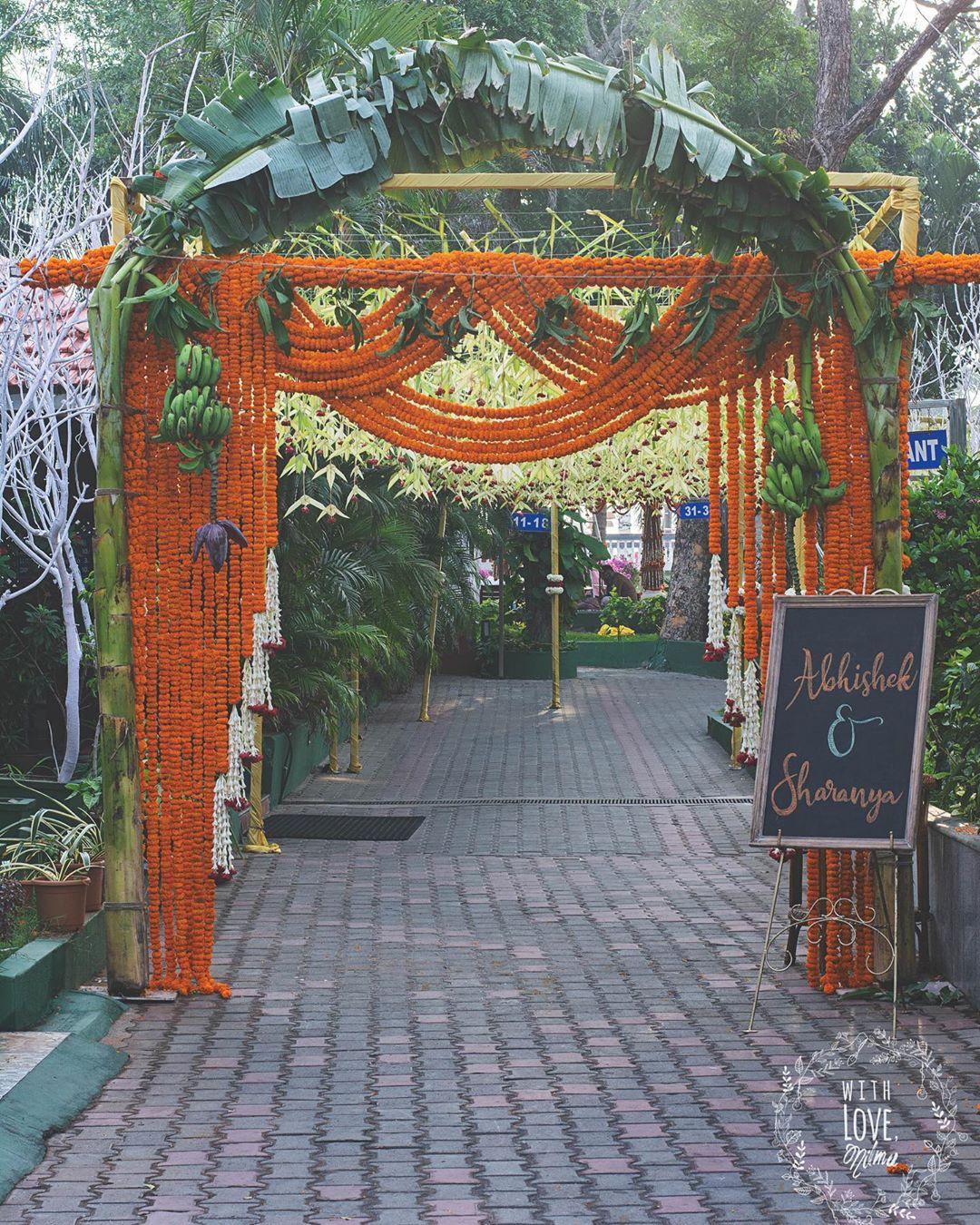
Tied outside the house that hosts the marriage is a structure made of coconut leaves tied together with banana stalks on either end known as Chhapra. This structure is put up after the Chhapra puja.
Bale Shastra
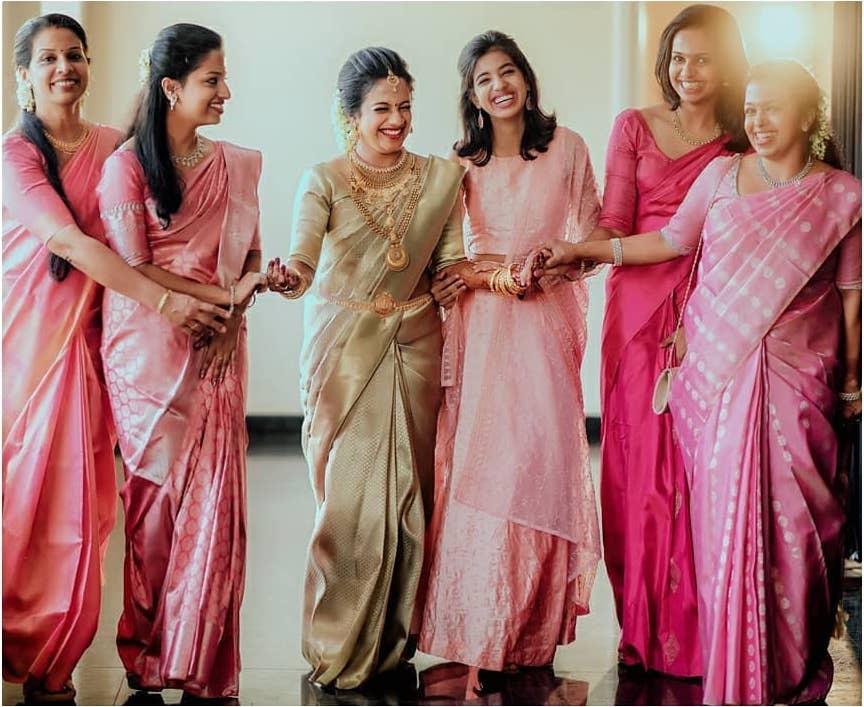
Blae in Kannada means bangles. this is a pre-wedding ritual when the bride goes for a puja to seek almighty's blessing at the mandir and then there is a bangle ceremony held where the bride gives bangles to the closest married women in her family.
Kaashi Yaatre
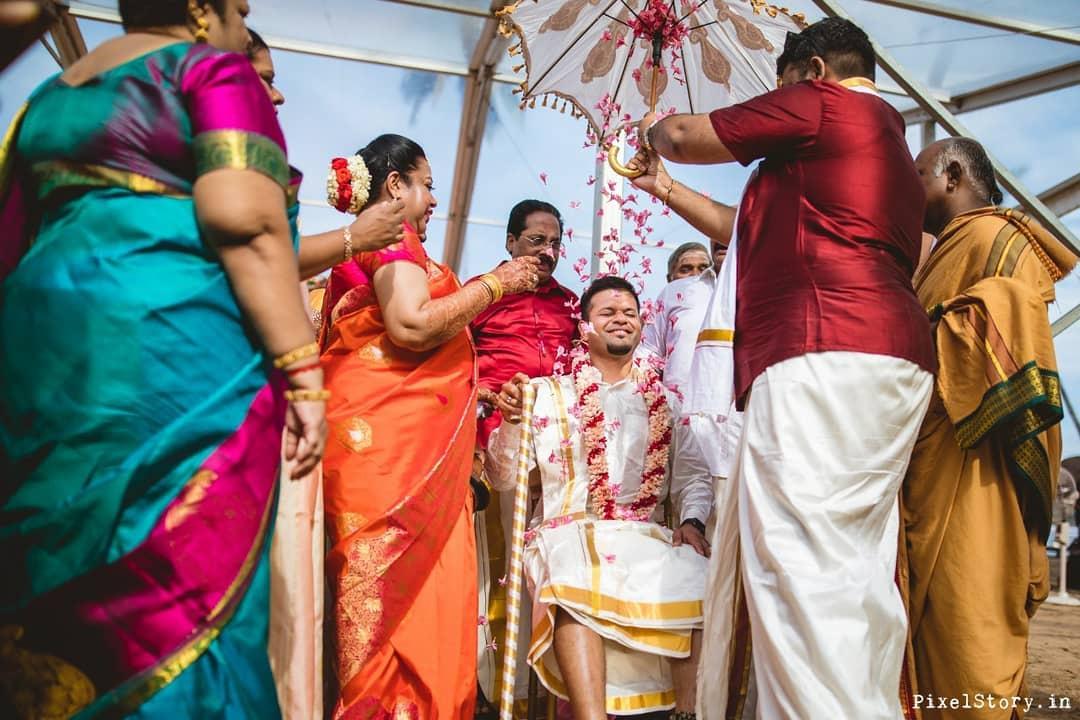
This is one of the most fun rituals of Kannada weddings. This is a pre-wedding ritual of Kannada weddings where the groom pretends to walk away angrily because no one was finding him a suitable bride. The ritual is named Kaashi Yaatre because the groom threatens his family members that he will set out for a pilgrimage to Kaashi. He wears a dhoti and carries a walking stick, an umbrella, a fan and some edibles like rice, coconut and dry fruits. Right when he is about to leave the house, his maternal uncle comes forward and stops him by showing him the bride that they have chosen for him. The groom is happy to hear this and decided to stay back and get married to his beautiful bride.
Dev Karya

On the day of the wedding, before the groom leaves for the bride's residence to get married, he visits all the nearby temples or any specific temple that their family worships to seek the blessings of all the deities. This is also a pre-wedding ceremony when the things that are to be used for the wedding are placed in front of Lord Ganesha to seek his blessings before stepping into an auspicious day.
Wedding Rituals
The wedding ceremony is not an elaborate one. But this minimalist ceremony is loaded with different traditions that are of utmost importance to the culture and to complement the Kannada wedding flawlessly. Take a note.
Mandap Puja
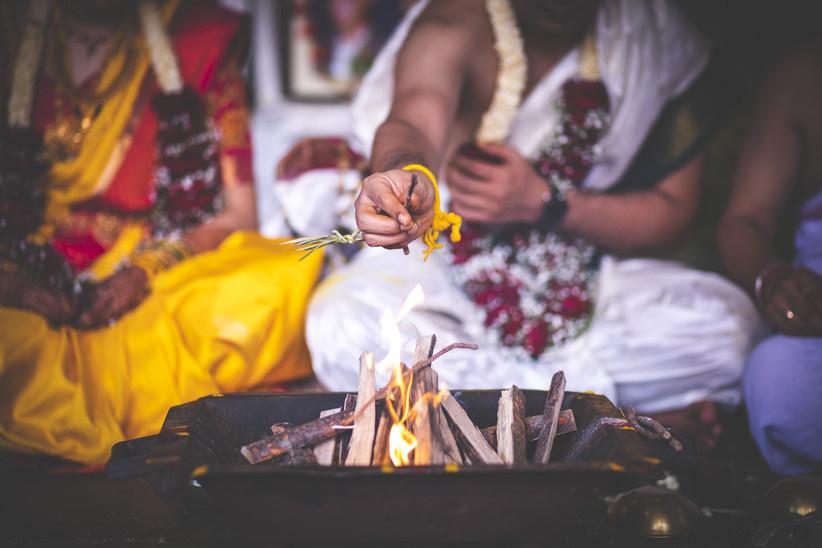
Before the wedding rituals start at the mandap - the altar or platform where the wedding takes place, the priest who is in charge of commencing the wedding does puja of the mandap as well as the puja of the venue to purify it and get it ready for the wedding.
Greeting Groom’s Party

Image Courtesy: Moving Pictures
When the groom along with his party and his family members reach the wedding venue (which used to conventionally be the bride's house) and was received at the gate by the family of the bride. Five married women from the bride's side (mostly family members) take turns to do the groom's aarti and then show him up to the bride.
Var Puja

The Kannada traditions consider the groom to be an incarnation of Lord Vishnu. This tradition involves the groom to be worshipped by the bride's party or family members and then he is led to the wedding mandap by the bride's father. The bride is already seated on the mandap and the bride's father ushers the groom to take the seat next to the bride and then washes his feet. This gesture of respect is followed bu the bride's father gifting a silk dhoti and a scarf to the groom. This is known as the pitambar. The groom then changes into this dhoti and scarf and takes part in the wedding then.
Jaimala

The bride's face remains covered behind a fan made up of peacock feathers and is generally accompanied by her sister who holds this fan for her. A cloth curtain is then placed between the bride and the groom in the mandap while they are seated, barring them from looking at each other. Once the priest starts his mantras for the wedding, the curtain is gradually asked to be removed allowing them to look at each other and then exchange the varmalas/jaimalas.
Dhareherdu
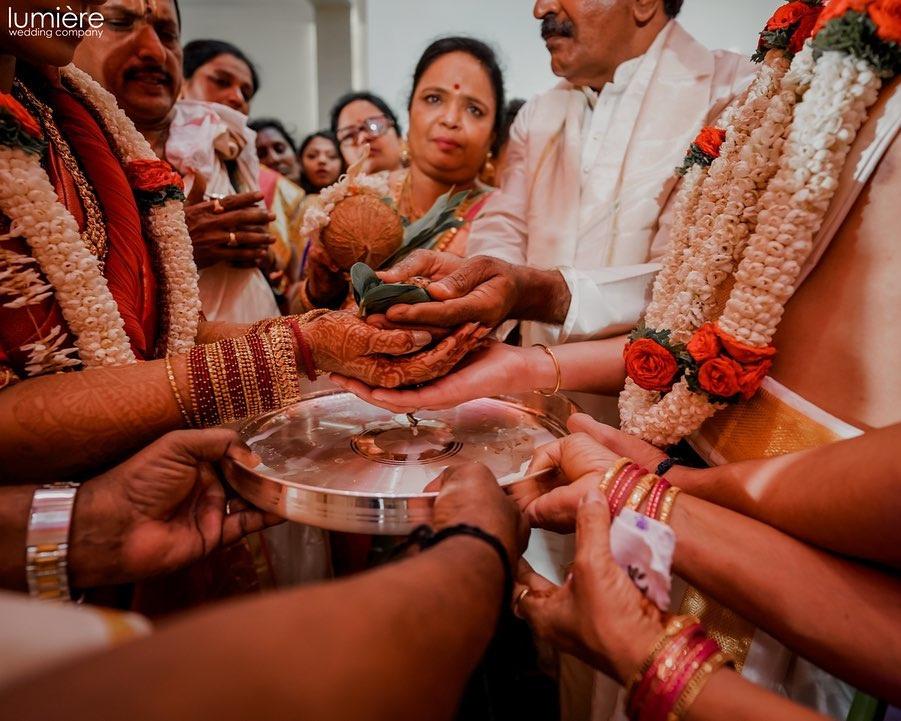
What is typically known as the Kanyadaan in the Hindu wedding ceremonies of North and some other cultures, Dhareherdu is the Kannada equivalent. The bride's right hand is placed on the groom's right hand and a betel leaf and coconut are placed on top. The parents of the bride are then supposed to pour holy water out of a traditional copper pot on top of this- preferably from the river Ganges known as dhara. This is the gesture of agreement and blessing of the parents to take their daughter in marriage.
Saptapadi

Similar to Saath Phere, the end of the Kannada bride's outfit (generally the Pallu of her saree) is tied to the end of the scarf that the groom wears. This knot signifies the bond of forever. The couple then circles the sacred fire seven times and the bride follows the groom for 7 rounds with each round signifying a vow. These vows are meant to hold their marriage together. This is known as the Saptapadi. Once the Saptapadi is done, the couple sits down with the bride on the groom's left.
Thaali
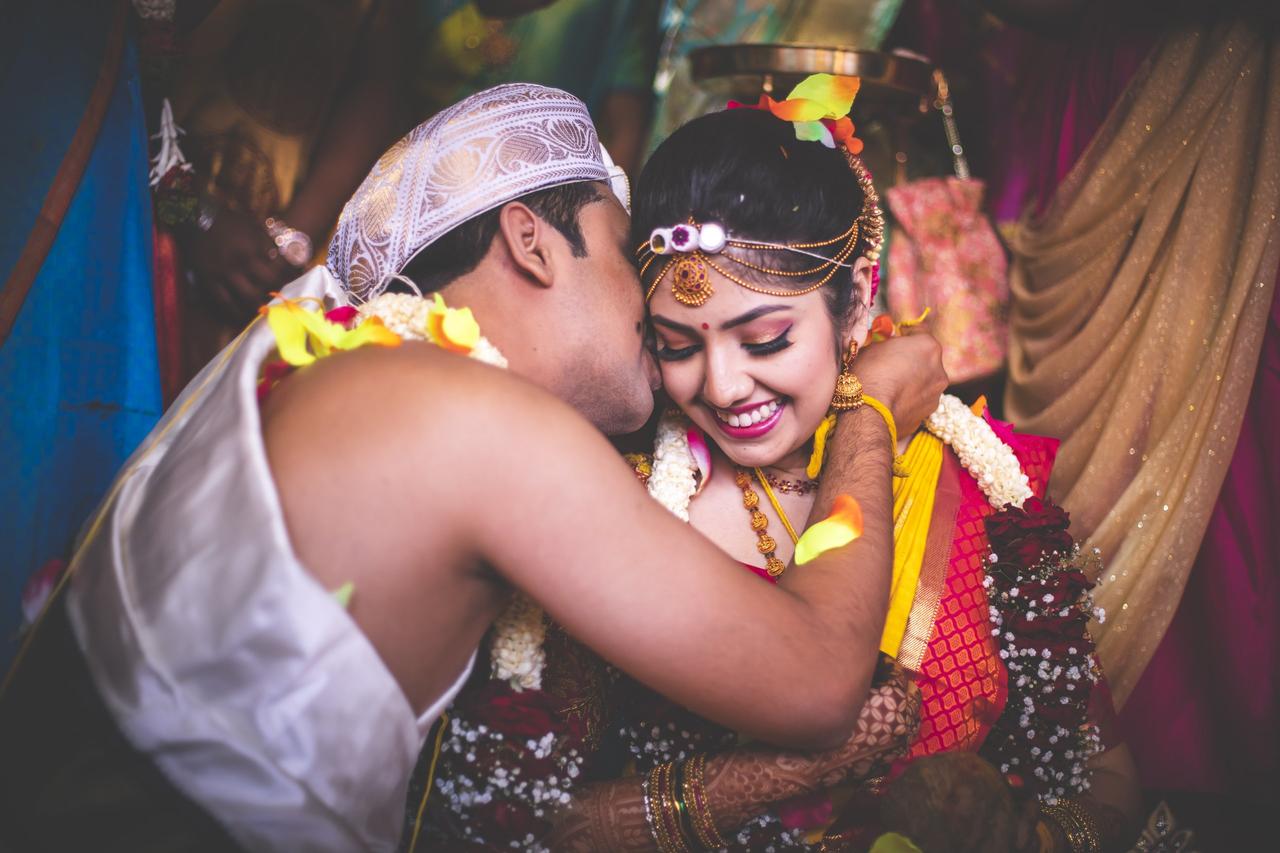
The Thaali ceremony makes it official that the couple is now married. With the help of 5 married women who surround the bride, the groom makes the bride wear the Thaali which is the Mangalsutra and they become husband and wife. This is the last wedding ritual performed in a Kannada wedding and it is followed by the couple taking the blessings of their elders.
Arundhati Nakshatra
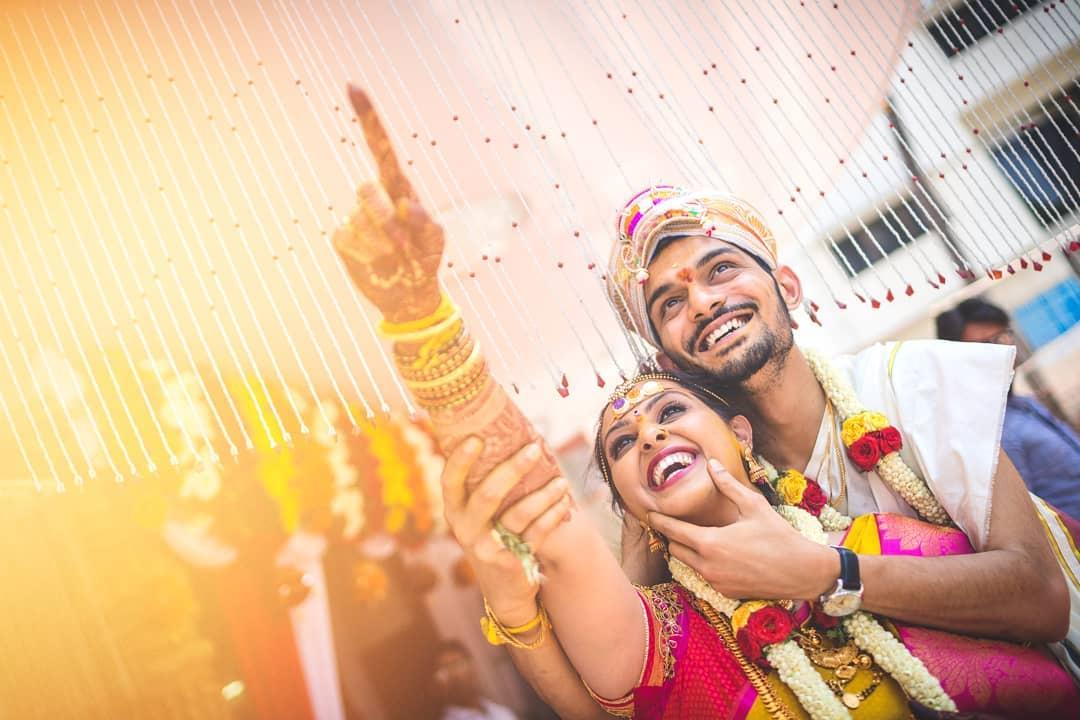
Arundhati Nakshatra is a ceremony that comes right after the Saptapadi where the couple steps out and points towards the sky to look at a star. This nakshatra/star is supposed to bless their wedding with happiness and prosperity.
Post-wedding Rituals
Post-wedding rituals are mostly fun traditional games that are played by the members of the two families. They act as the catalytic ice-breakers especially since marriages were arranged by families during the earlier days. They played a very crucial role in making the bride feel at home. Read to know more.
Okhli
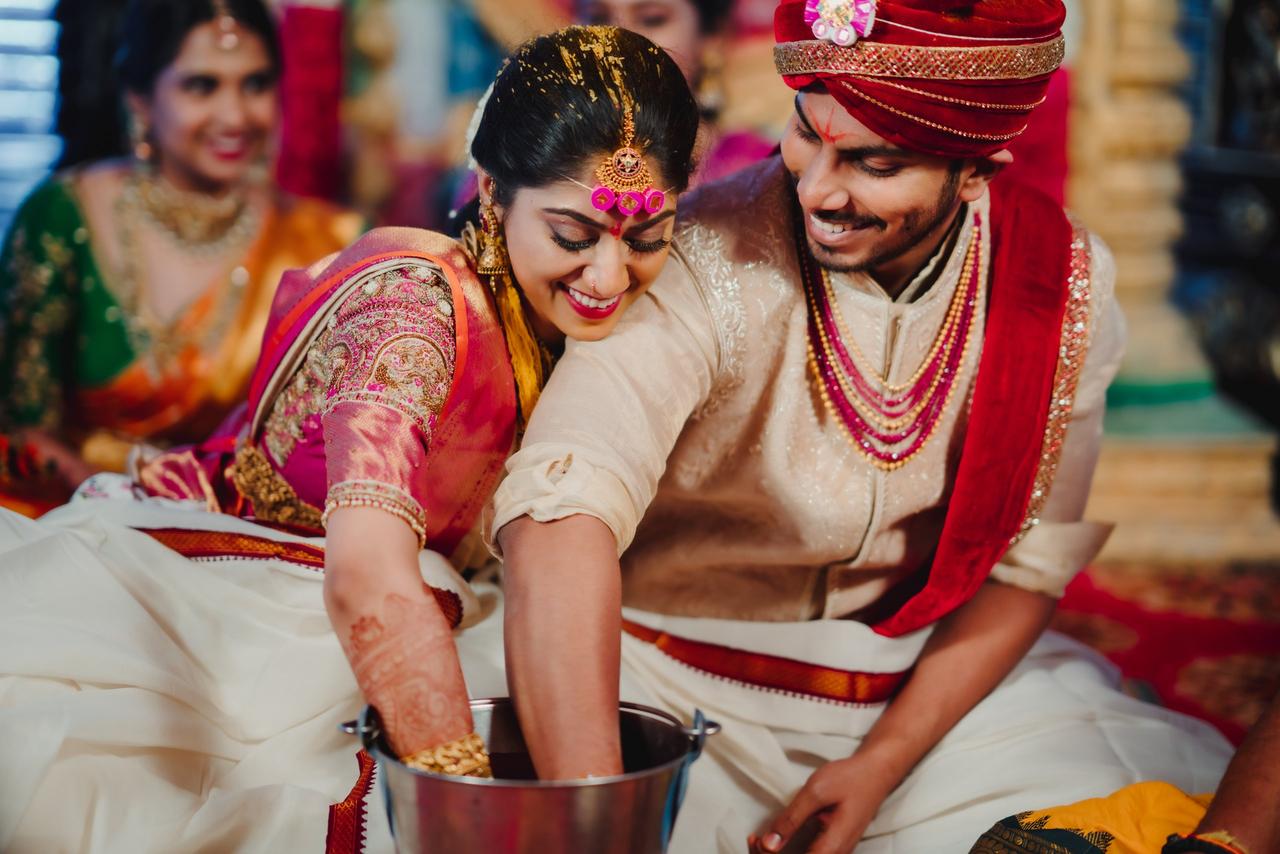
This is one of the most interesting post-wedding rituals. Okhli is a game where the groom's ring is dropped in a huge bowl of milk or coloured water. The bride and groom compete with each other in finding the ring and there are three rounds of it. If the bride is successful in finding the ring thrice, it is considered that she will be successful in taking care of every challenge that the marriage has in store for her.
Vidaai

This is the ceremony that is common across many cultures in India. It is time for the bride to bid adieu to her family and start a new chapter of her life as a part of the groom's family. It is a sad occasion and teardrops say it all. The family of the bride send her off along with gifts that are required to set up a new home like a cot, cooking utensils, umbrella and sweets. The bride's brother also accompanies her to the in-laws' home and stays the night only to depart in the morning.
Griha Pravesh

Image Courtesy: Pinterest
The ceremonial welcome that the bride is met with once she arrives at the house of her in-laws is known as Griha Pravesh or Mane Kamsudu. The phrase quite literally means welcome home. The mother-in-law of the newlywed bride performs aarti at the entrance to welcome her. A rice filled vessel (brass/copper pot) is placed at the threshold of the house and the bride is supposed to topple it with her right feet symbolising overflow of wealth and prosperity in the house after she comes.
Clothes Presentation Ceremony
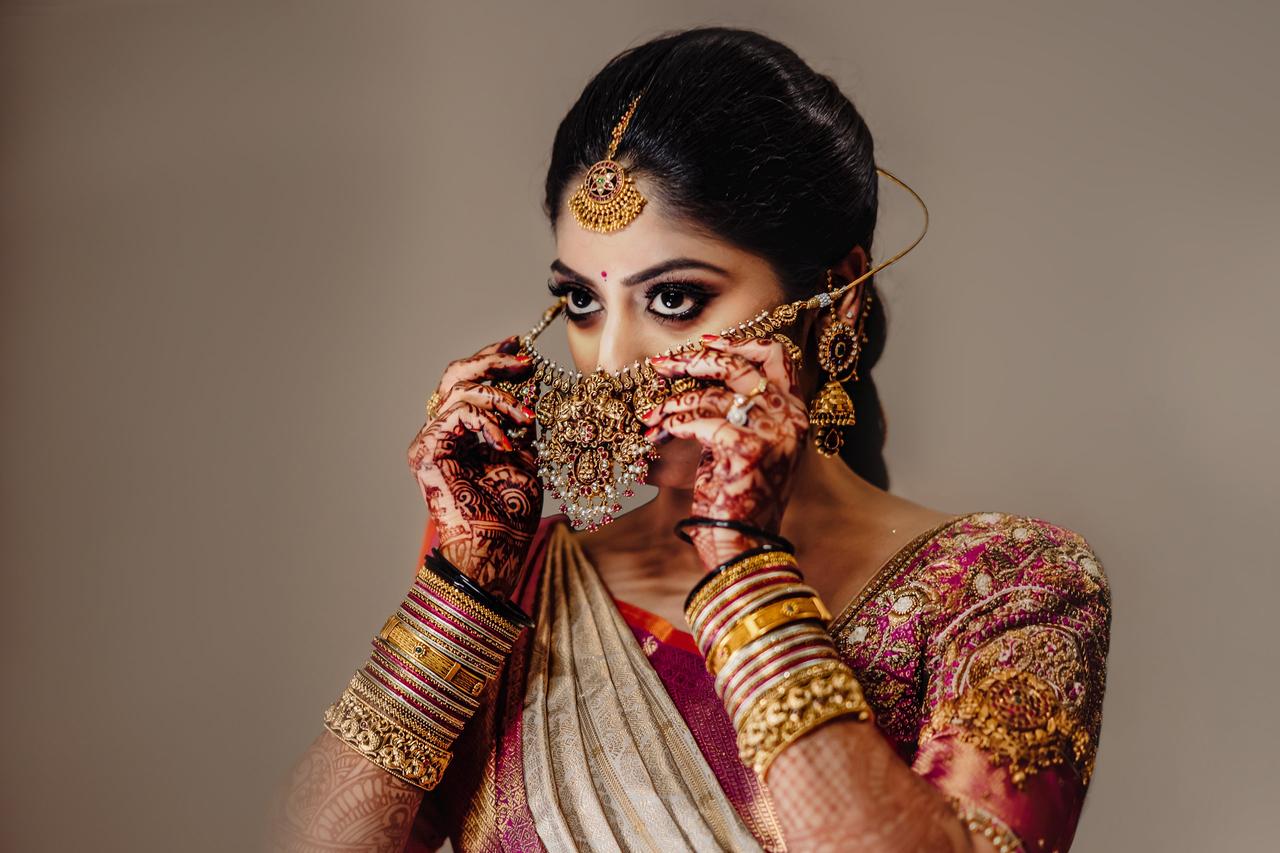
The groom then gifts 5 sarees to the bride as a part of the tradition. He can also give other gifts apart from this but the bride is supposed to wear these sarees for the different post-wedding ceremonies to follow.
Name Change Ceremony
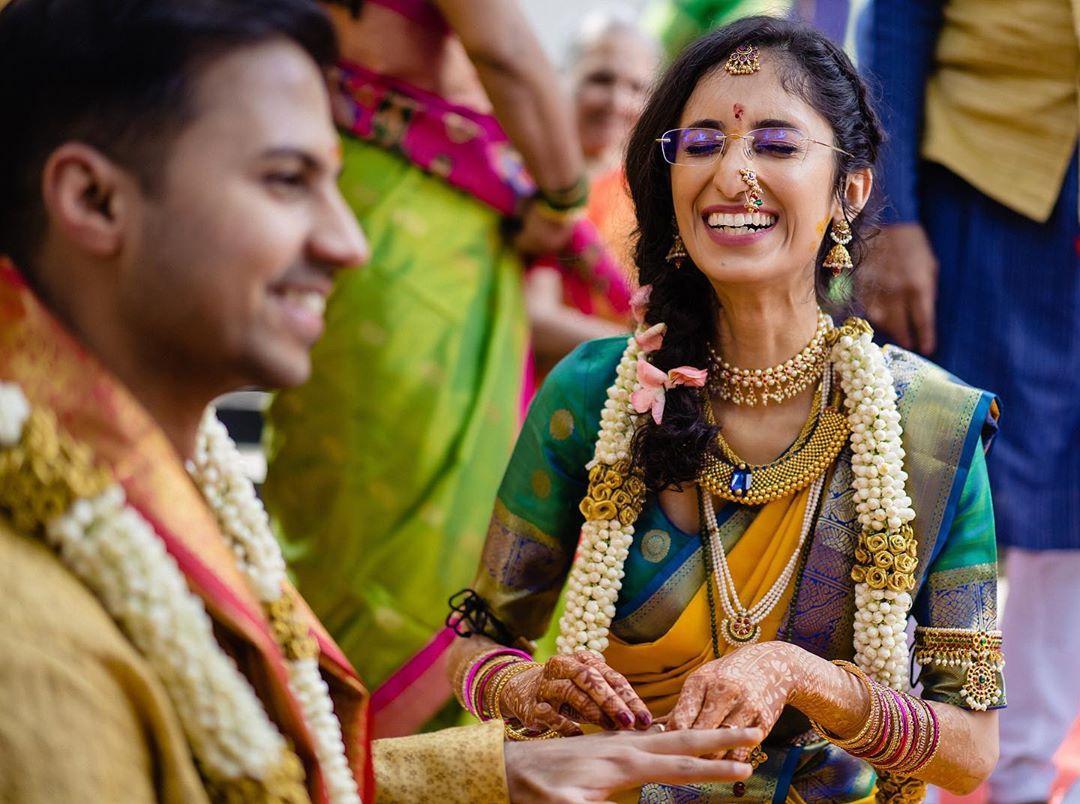
The name change ceremony is another post-wedding ritual where the groom is supposed to give a new name to his bride - as his bride. The groom writes her new name on a plate filled with rice using his ring and the bride takes the plate from him signifying acceptance of her new name.
Visiting the Bride’s house

This is one of the last post-wedding ceremonies of a Kannada wedding. The parents of the bride visit the in-laws and bring the groom and bride back to the bride's maternal home to stay for the night.
Reception
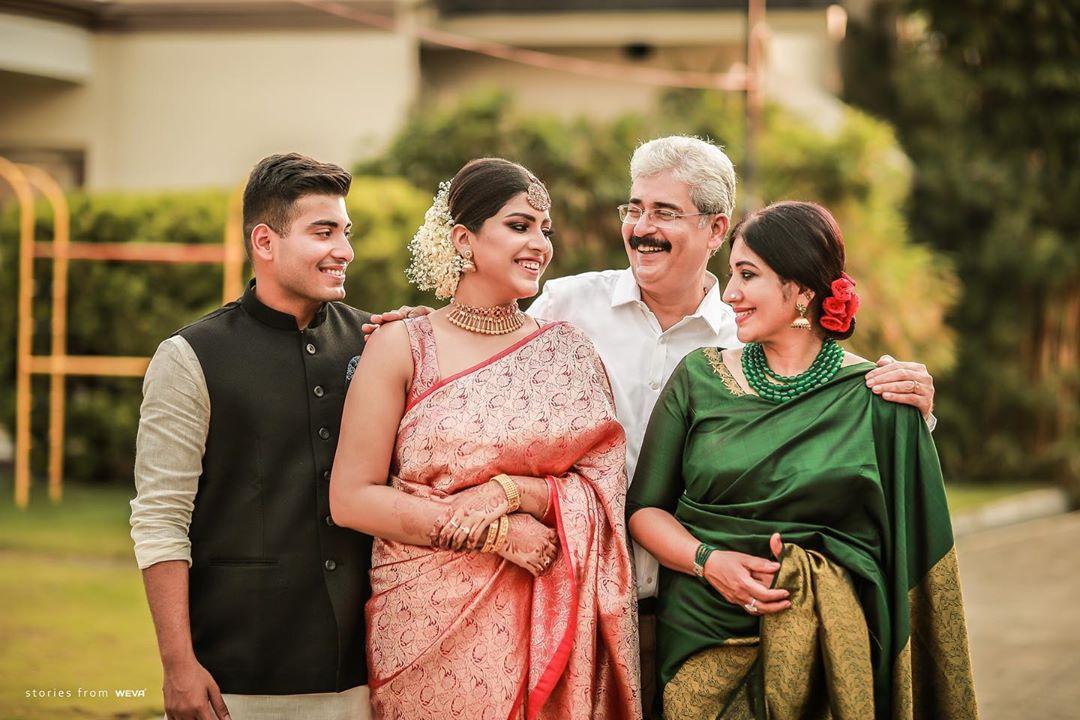
The reception is a formal celebration that the groom's family hosts after the wedding. The Reception is an official celebration where the groom and his family introduce the bride to their circle of friends and family members or acquaintances.
Wedding Outfits
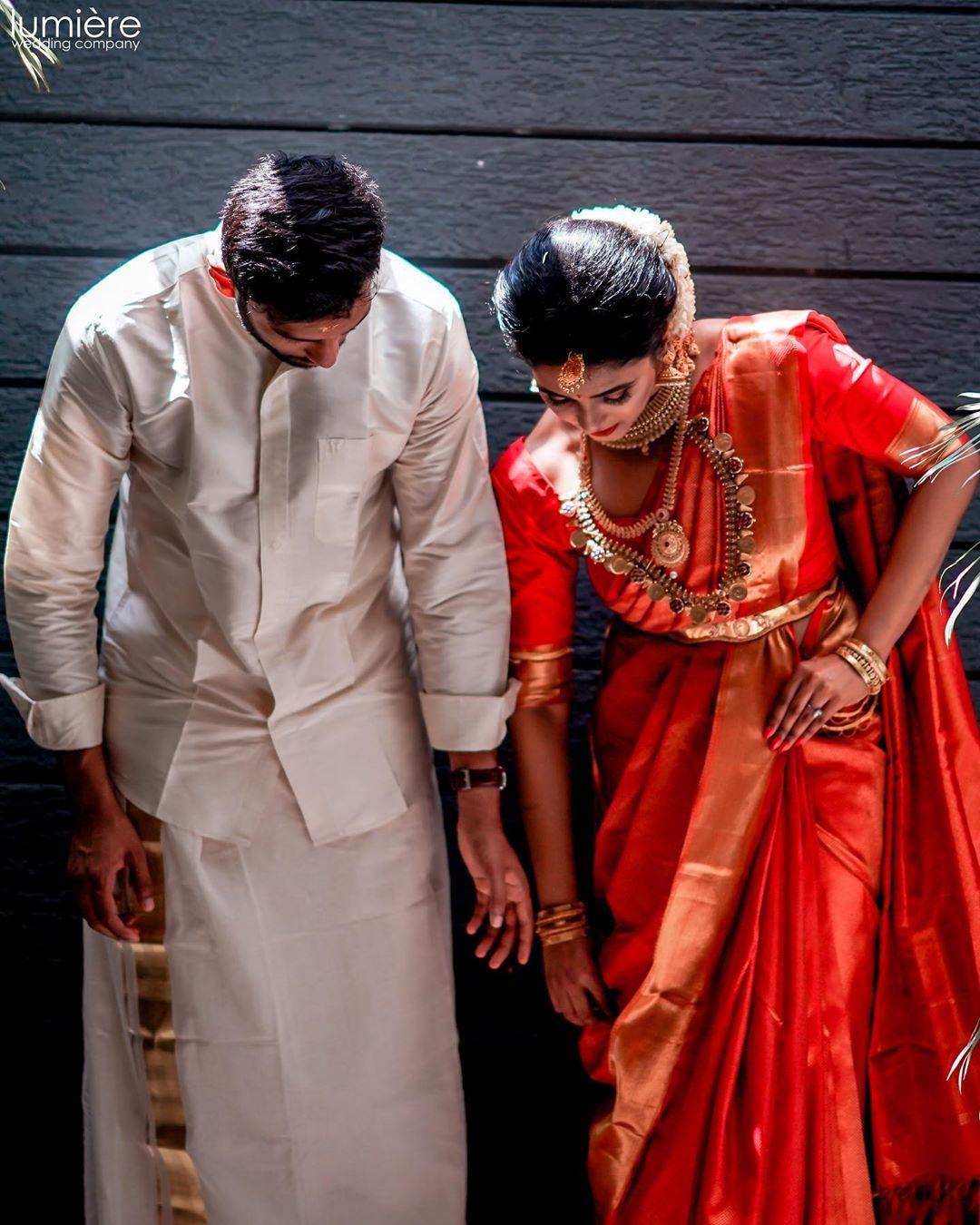
Kannadigas are devoted to their tradition when it comes to the wedding attires. The white crisp dhoti that the groom wears is known as Veshti and is wrapped typically around the waist. The Veshti is often made of cotton but it can also be made of silk and don beautiful ornate borders in gold. The Veshti is worn with the Angavastram - a scarf that is given to the groom by the bride's father. Similar to a Safa that the groom adorns on his head, the Kannada groom has a Pheta or the Pitambar. The groom also carries a stick that is blessed by the priest. Apart from this, he can choose to wear a shirt or a kurta too.
The wedding attire of the bride is highly elaborate and ornamental. On her wedding day, she flaunts a gorgeous 9 yards Nauvari saree that is similar to Marathi dresses for brides seen at Maharashtrian weddings. The bride flaunts Temple jewellery (mostly golden Temple Jewellery) that include Maang Tikka or Matha Patti, jhumka, Kamarbandh, layers of necklaces and sometimes even a Rani Haar. The millennial brides have however flaunted beautiful Kanjeevaram sarees or just draped the saree the regular way instead of the Nauvari style.
Note: With valuable insights from Roma Ganesh.
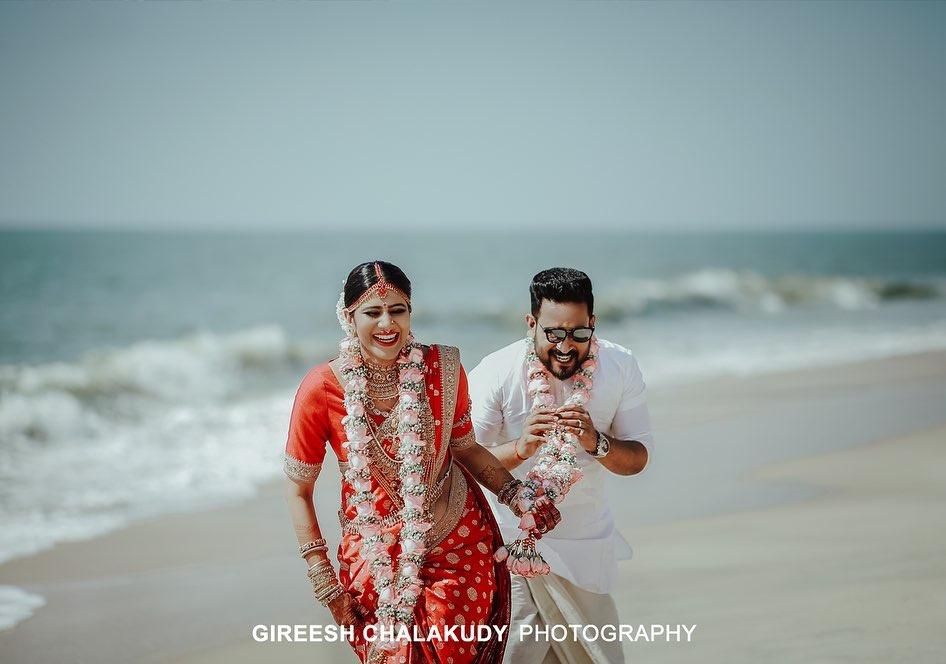
Image Courtesy: Gireesh Chalakudy Photography
We are left awestruck by the beauty of the Kannada weddings and the rich cultural heritage it carries. If you are planning a Kannada wedding, we have the perfect vendors - photographers, wedding planners, catering services, decorators for the day etc, on board with us.
With wedding planning becoming easier by the day and accessible from the comfort of your couches with the Weddingwire India app, you can plan your big day fuss-free. Check out the features in the app now!


